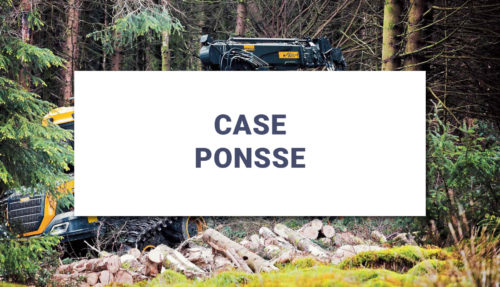The Finnish Red Cross Blood Service is a not-for-profit, nationwide blood service provider in Finland that’s responsible for recruiting donors, organizing blood donation, and performing research and testing. Donations are used to make blood products which are delivered to hospitals for critical usage. They were Inclus’ first customer, and continue to use Inclus for their strategic planning, which has included major projects in 2016 and 2020, as well as smaller projects.
In 2016, The Blood Service assessed and prepared for numerous scenarios, including a global pandemic “The trends in society are frequently changing and it’s important to involve our staff in this as well,” says Willy Toiviainen, Director of Communications, Marketing and Human Resources at the Finnish Red Cross Blood Service. “In 2016 we became familiar with Inclus as we wanted to involve our personnel by looking at what is happening and what their opinion was.”
Scenario planning and strategic work is at the core of Inclus’ software: gathering information from participants and displaying results in an intuitive way helps to foresee impacts in interdependent, complex environments similar to the one in which The Blood Service operates. These functions are not only valuable, but necessary: never has uncertainty been as high as it has been today. “We need to understand how the world changes around us … legislation, the political environment, economics, and technology. For example, how to contact donors, make products, and social matters, such as people’s willingness to donate and changes to voluntary work globally.
For the Red Cross Blood Service, these are critical questions to ask, as they directly impact their operations across a large supply chain. “It’s important that we ask the people that know: the experts working for us and the hospitals. This is where the idea to use Inclus came from: we needed to ask as many experts as possible what is happening, understand how it impacts our operations, and act accordingly.” Having a strong operational overview is central as their blood products are vital in a larger supply chain. Therefore, working with hospitals and understanding industry and societal developments is paramount. “It’s important that we ask the hospitals as they know what is needed for the patients. They know how patient care is developing, new trends, treatment methods, and how surgical methods are evolving and developing. There are other factors too – an aging population increases demand for treatments.”
With changes in technology and demographics, the Blood Service performs strategy work to effectively minimize and avoid shocks to their operations. “We need to know if the demands for blood products are changing. We don’t want to collect any more blood than necessary: it is critical to find the optimal operating capacity for our service across staff, equipment and production.” With clear communication and understanding on both sides, the Finnish Red Cross Blood Service can help hospitals and their staff use the blood products optimally and avoid waste.
“Rather, we want to avoid risks for patients. In working together with the hospitals, we can reduce the use of blood products and avoid transfusions where possible. We have decreased our operations by one-third over the last twenty years… that’s a good thing!” remarks Willy. “However, we still need 800 donors every day. With around five-hundred staff, we must know how developments will occur and plan accordingly. We have great responsibility to maintain our operations and develop our organization in way that is not too rapid.”
Inclus – a tool to understand the bigger picture
Working with multiple scenarios and strategic outcomes can empower and equip individuals to react to changes with greater efficiency, improve actionable plans, and foster a culture of preparedness and understanding. Inclus has been developing its tools for this purpose since its inception. “We knew that the tool had been used in international work and in crisis areas with Crisis Management Initiative (CMI),” says Willy. “Prior to 2016 we used another product. However, we selected Inclus as you can actually see the differences in opinion between subgroups. It’s easy to do online and work with visualized data that is evolving all the time. It enables the participants to see the results right away.”
Approximately 200 personnel from the Blood Service personnel took part in the first study in 2016, with additional people taking part from the customer (hospital) side. “It was a success: we used it with our staff, the hospitals, as well as the board. We were able to comprehend the background and basics for our strategy work, which laid important foundations,” says Willy. “We did it again in 2020 with the updated tool with our team leaders. We have been very happy to use Inclus over many years.” The average feedback of the participants on the usefulness of the Inclus process was 4,62/5 , on a scale where 5 was excellent. “It was an easy choice for us to come back given our successful first experience… we also wanted to have continuity and an ability to compare results with our previous ones, so we stayed with Inclus.”
Working with Inclus over 5 years
Inclus has been developing its software and improving functions for a variety of use cases, where its efficiency-in-use improved over the years. “Previously when we used the software, each person decided when they would perform the task independently in their own time. Inclus is a very flexible too and in our most recent study it was very efficient. It only took an hour to complete the initial questionnaire – everyone joined at the same time in a Teams meeting, did the task, and saw the results immediately. On the first day, we did a review and displayed the results. Inclus helped us decide on the most relevant key findings and what we needed to examine further. Following this, we produced a workshop where participants could state their opinions: what the result meant for them, and if they understood the results.”
Visualizing information and saving time in decision making processes is at the core of Inclus’ functionality. “The tool is so easy to use, understand and it’s very clear: that’s the advantage with Inclus. It’s also very quick: we probably spent three hours using the tool on the first day and giving the reviews, and the next day was 3 hours of workshopping. We made a mix of trends and Inclus helped us to come up with that key list to review.”
Inclus’ solution prioritizes getting people involved in a simple process. “The participants were very pleased… seeing results and being able to discuss them right away was essential an efficient way to perform this task. It only took a few hours and we got the report right away. After we saw the results, we were able to start planning right away.”
From there, the participants were able to look at the visual information quickly, identifying and further examining key issues in greater detail. “We looked at the visual view of results, but we also lifted up some key results and asked further questions from participants based on those. For example, ‘What do these results mean for us, what should we do, what should we learn, what should we think about?’. This gave us some very important information for the next strategy work round.”
When performing comprehensive and effective strategic work, it is important to collect data across an organization. “It’s not only what the top management thinks…it’s very important that we ask everyone about these things. We could already start to think about what the results meant for us: what should we do in the blood service according to these results?”
Benefits of Inclus and performing strategic work
Strategy work has been essential for the Finnish Red Cross Blood Service in improving the preparedness of the organization. “We already know what is happening in the world, the demands for us, and some of the things that we should consider when we look at the world. This is what we achieved last fall with Inclus and our future report. That’s our way to look at the world and do strategy. We try to study as much as we can, we involve our people and staff to join, we also involve our stakeholders. This helps us when we build the strategy – we have a vision, goals, and the ways to achieve the goals. Our strategic work is updated on a yearly basis. However, we also have foundational work where we stop for a while and focus on a study. We’re mostly concerned with large trends, and these large studies are essential.”
Performing strategic work and scenario planning builds a workplace culture that supports preparedness and plans to move forward on. “When we complete our study and have our strategy, people have already thought about why the strategy is in place: the needs, demands, and challenges. It is easier for people to understand when they’ve done the basic work.”
Inclus’ origins in peace mediation are important in critical processes, as there is often a requirement to build common understanding. “It’s a communication process,” says Willy. “When people understand the challenges, they probably understand the strategy as well. If they don’t understand the challenges, they will wonder why our strategy looks the way it does. It’s a process. It is easier to understand our strategy when people are in the right mindset.”
Willy suggests that the communication process is of equal importance to the studies, if not more important. “It’s not only that you ask people and get the results. When you ask people, you communicate. You tell others that ‘you are important, and we care about you, and what you think.’ When you ask people questions critical to your and their company, you value those people and their opinions. You show that you care what they think about.”
Building common understanding is also essential when it comes to the allocation of resources that accompany strategic decisions. “When we start to discuss our actions, there will be competition for resources… this is completely normal. However, if we don’t have background information as to why certain matters are so important for us, arguing will take time and potentially and impact relations. We need to know the background and subsequently make decisions on what is most important to our organization in order to cope with the changes in the world. This is strategy. We can avoid an argument about resources as we have already decided what is important. But we need to have the background information to understand, otherwise we cannot make the decisions about what is important, what is strategy, etc.”
Following the strategic work performed with Inclus, there is a foundation from which the organization can operate confidently over the coming period. “We’re in the process of getting a new director, as well as a new board. Our top management has changed, and this will impact our actions. In this process, we need to review our information and strategic plans and develop a new strategy for the coming years with our staff. Given the strategic processes that we’ve done with Inclus, the basic information is already there. The management can learn about what we have done and lead us for the new strategic work from this information.”
‘I have to say, at this point, I actually cannot think of anything that would need to be developed. I think it is very easy to use and it is clever how it builds. and the reports come very easily. It’s simple to involve people, get the results right away, and really study what different people think about it. See the differences in such a clever way.’




